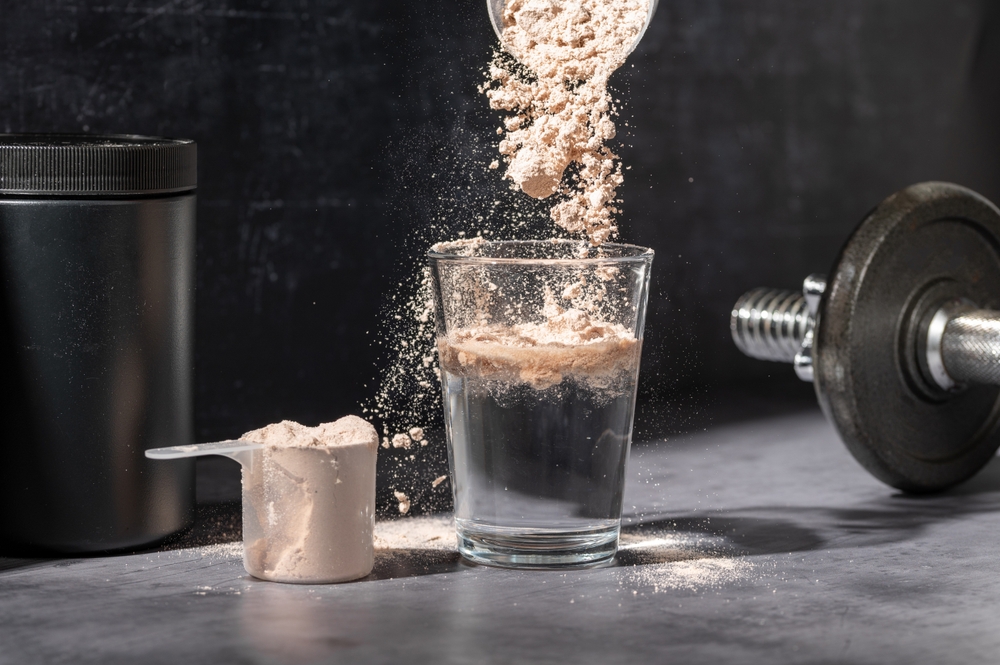
New health trends occasionally emerge to dominate fitness centers, social media platforms, and domestic spaces. The fitness industry has experienced numerous questionable trends, which include vibrating belts and miracle shakes. The first excitement about these ideas fades away when scientific data and real-world practice show them to be incorrect. The truth is, many of these so-called revolutions ultimately turn out to be nothing more than marketing masquerading as motivation. People who want to create lasting fitness plans need to recognize ineffective fads because this helps them save time and money and prevents disappointment.
1. Shake Weight
When the Shake Weight hit infomercial screens, it seemed like a quick route to toned arms. The promise was simple: just shake this dumbbell for six minutes a day and watch your muscles transform. In reality, the device offered little more than awkward movement and viral laughs. Exercise experts noted that the motion did not effectively engage muscles or mimic real strength training. This fad lost credibility once users realized that traditional resistance exercises gave far better results without the gimmick.
2. Waist Trainers
Waist trainers gained massive popularity through celebrity endorsements and social media posts showing “instant hourglass” results. The idea was that wearing a tight corset-like band would shrink the waistline and improve posture. But what actually happened was discomfort, restricted breathing, and even bruising for some users. The body doesn’t permanently reshape from external pressure—it just compresses temporarily. Over time, people recognized that this fitness fad lost credibility because it relied on illusion rather than physiology. Real core strength comes from consistent exercise, not squeezing the midsection.
3. Vibrating Platforms
Vibrating exercise platforms are claimed to burn fat, build muscle, and improve circulation simultaneously. The marketing suggested you could stand on a shaking base and achieve the same benefits as a full workout. While vibration can help with balance and recovery in small doses, it’s not a shortcut to fitness. Once studies showed minimal calorie burn and limited muscle activation, the hype faded. Many gyms quietly removed these machines, leaving behind a reminder that flashy tech doesn’t always equal progress. As far as fitness fads lost credibility, this one shook itself out fast.
4. Juice Cleanses
Juice cleanses promised detoxification, quick weight loss, and glowing skin. For a few days, participants would drink nothing but fruit and vegetable juices. It sounded clean and simple, but the reality was nutrient imbalance and blood sugar spikes. The body already has built-in detox systems—the liver and kidneys do that job perfectly well. While short cleanses might offer a mental reset, they don’t create lasting health benefits. As people learned that most of the weight lost was water, not fat, this trend quickly joined the list of fitness fads that lost credibility.
5. ThighMaster
The ThighMaster became an icon of 1990s fitness culture. It promised to sculpt thighs through repetitive squeezing motions while watching TV. The concept was catchy and easy to market, but it was not particularly effective for achieving balanced strength or fat loss. Spot reduction—the idea that you can burn fat in one specific area—has long been debunked. The ThighMaster primarily targeted the inner thigh muscles but largely ignored the rest of the body. Eventually, people realized that compound movements, such as squats and lunges, did far more for overall tone and strength. Another once-famous gadget that couldn’t stand the test of time.
6. Detox Teas
Detox teas took social media by storm, pairing influencer posts with promises of rapid slimming. The supposed secret was a blend of herbs that would flush toxins and flatten stomachs. In truth, most of these teas acted as laxatives, causing dehydration and temporary water loss. The results looked dramatic for a day or two, but quickly reversed. Nutritionists warned that overuse could lead to electrolyte imbalances and digestive issues. Once users connected the dots between bathroom trips and “weight loss,” this fitness fad lost credibility almost overnight. Sustainable weight management relies on the quality and consistency of one’s diet, not the use of tea bags.
Why We Keep Falling for Them
The disappearance of previous trends makes way for fresh patterns to emerge. People find fast results highly appealing when their lives become busy and their health targets seem unreachable. Fitness fads lost credibility because they exploited human impatience and hope, which led people to dismiss practical reasoning. The marketing industry operates in an ongoing cycle because it actively drives change instead of standing still.
Real fitness doesn’t come from shortcuts. Your success depends on creating regular habits and understanding your body’s needs for rest and sleep. Every week brings new products that claim to revolutionize everything, but history shows us many trends have failed to deliver on their promises. Did you attempt any of these fads? What knowledge did you gain from this experience?
What to Read Next…
- 9 Fast Food Items That Nutritionists Secretly Say Are Worse Than Cigarettes
- 7 Tactics Grocery Stores Use to Keep You From Thinking About Price
- 8 Everyday Services That Are Slowly Becoming Subscription Only
- 6 Online Freebies That End in Identity Theft
- Are Budgeting Apps Designed to Push You Into Debt
The post 6 Fitness Fads That Completely Lost Credibility appeared first on The Free Financial Advisor.







